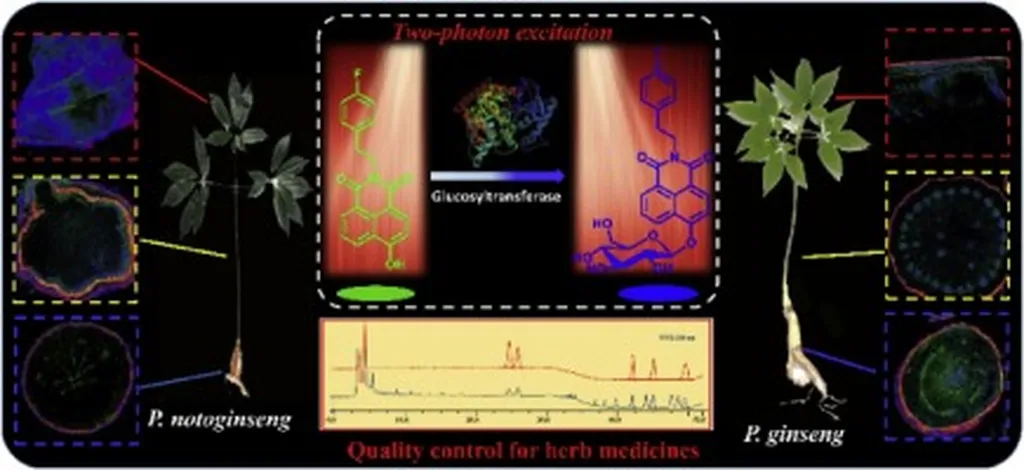In the heart of China’s Yunnan province, a groundbreaking development is taking root, promising to revolutionize the way we detect and combat leaf diseases in *Panax notoginseng*, a highly valued medicinal plant. Researchers, led by Chunhao Cao of the Yunnan Key Laboratory of Efficient Utilization and Intelligent Control of Agricultural Water Resources at Kunming University of Science and Technology, have developed a novel fluorescent sensor that could significantly impact the agricultural sector.
The sensor, named WA-CDs@MIL-101, is a carbon dot-based fluorescent probe encapsulated by MIL-101, using wax apple as a green carbon source. This innovative tool is designed for the rapid and sensitive detection of spores that spread leaf diseases in *Panax notoginseng*, also known as Tianqi or pseudoginseng. The plant is prized for its medicinal properties and is a crucial crop in traditional Chinese medicine.
The research, published in the journal ‘Plants’, demonstrates that the WA-CDs@MIL-101 probe exhibits excellent sensing performance. It shows a strong linear relationship between spore concentration and fluorescence recovery ratio, with a detection limit as low as 5.15 μg/L. This high sensitivity is a game-changer for early disease detection and prevention.
“Our goal was to create a tool that could enable rapid and accurate detection of spores, allowing for early warning and intervention,” said Cao. “The WA-CDs@MIL-101 probe not only meets this need but also shows great promise for practical application in the field.”
The probe’s effectiveness was thoroughly tested on *Panax notoginseng* leaves, achieving satisfactory recoveries ranging from 94% to 102%, with relative standard deviations of 1.3% to 3.4%. This level of accuracy is crucial for farmers and agricultural businesses, as it allows for timely and targeted treatment, reducing crop loss and increasing yield.
The implications of this research extend beyond the immediate agricultural benefits. Early and accurate detection of plant diseases can lead to more efficient use of resources, including water and pesticides, contributing to sustainable agricultural practices. This aligns with global efforts to promote environmentally friendly and economically viable farming methods.
Moreover, the development of the WA-CDs@MIL-101 probe highlights the potential of green-synthesized materials in agricultural technology. The use of wax apple as a carbon source not only makes the process more environmentally friendly but also demonstrates the versatility of natural resources in technological applications.
As the world grapples with the challenges of climate change and food security, innovations like the WA-CDs@MIL-101 probe offer a beacon of hope. They represent a step forward in integrating advanced technology with sustainable practices, paving the way for a more resilient and productive agricultural future.
The research conducted by Cao and his team is a testament to the power of interdisciplinary collaboration and innovative thinking. It underscores the importance of investing in agricultural research and development, as these efforts can yield technologies that have far-reaching impacts on both the economy and the environment.
In the words of Cao, “This is just the beginning. The potential applications of our probe extend beyond *Panax notoginseng* and into other areas of agriculture. We are excited to explore these possibilities and continue pushing the boundaries of what is possible in agricultural technology.”
As the world watches, the humble wax apple from Yunnan province might just become a symbol of a new era in agricultural innovation, one that is green, smart, and sustainable.

